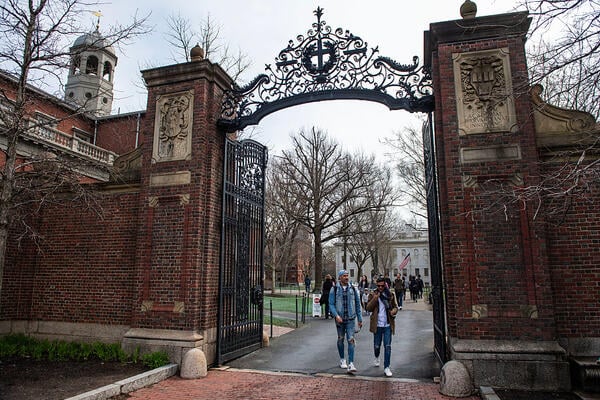The legal challenge takes aim at Rubio’s use of statutes to deport legal noncitizens, namely international students Mahmoud Khalil and Rümeysa Öztürk, for their speech alone. It was filed by the Foundation for Individual Rights and Expression (FIRE) on August 6.
“In the United States of America, no one should fear a midnight knock on the door for voicing the wrong opinion,” said FIRE attorney Conor Fitzpatrick: “Free speech isn’t a privilege the government hands out. Under our constitution it is the inalienable right of every man, woman and child.”
FIRE, a non-partisan advocacy group, is seeking a landmark ruling that the first amendment trumps the statutes that the government used to deport international students and other lawfully present noncitizens for protected speech earlier this year.
It cites the case of Mahmoud Khalil, an international student targeted by the Trump administration for his pro-Palestinian activism, who was held in detention for three months after being arrested by plain clothed immigration officers in a Columbia University building.
The complaint also highlights the targeting of Tufts University student Rümeysa Öztürk, detained on the street and held for nearly seven weeks for co-authoring an op-ed calling for Tufts to acknowledge Israel’s attacks on Palestine and divest from companies with ties to Israel.
FIRE has said that that Rubio and Trump’s targeting of international students is “casting a pall of fear over millions of noncitizens, who now worry that voicing the ‘wrong’ opinion about America or Israel will result in deportation”.
This spring, thousands of students saw their visas revoked by the administration, after a speech from Rubio warning them: “We give you a visa to come and study to get a degree, not to become a social activist that tears up our university campuses”.
Free speech isn’t a privilege the government hands out
Conor Fitzpatrick, FIRE
Though the students’ statuses have since been restored following a court hearing deeming the mass terminations to be illegal, some students opted to leave the US amid fears of being detained or deported.
This summer, international student interest in the US fell to its lowest level since mid-pandemic, with new estimates forecasting a potential 30-40% decline in new international enrolments this fall following the state department’s suspension of new visa interviews.
Plaintiffs in the lawsuit include The Stanford Daily – the independent, student newspaper at Stanford University – and two legal noncitizens with no criminal record who fear deportation and visa revocation for engaging in pro-Palestinian speech.
“There’s real fear on campus and it reaches into the newsroom,” said Greta Reich, editor-in-chief of The Stanford Daily.
“I’ve had reporters turn down assignments, request the removal of some of their articles, and even quit the paper because they fear deportation for being associated with speaking on political topics, even in a journalistic capacity.
“The Daily is losing the voices of a significant portion of our student population,” said Reich.
The complaint argues that Rubio’s wielding of two provisions of the Immigration and Nationality Act is unconstitutional when used to revoke a visa or deport someone for the first amendment right of free speech.
“The first allows the secretary of state to render a noncitizen deportable if he ‘personally determines’ their lawful ‘beliefs, statements, or associations’ ‘compromise a compelling United States foreign policy interest’”, explains the document.
“The second allows the secretary ‘at any time, in his discretion, revoke’ a ‘visa or other documentation’”.
The complaint argues that both provisions are unconstitutional as applied to protected speech, based on the first amendment promise “that the government may not subject a speaker to disfavoured treatment because those in power do not like his or her message”.
In our free country, you shouldn’t have to show your papers to speak your mind
Will Creeley, FIRE
According to the claimants, Trump and Rubio’s targeting of international students is evidence of noncitizens not being afforded the same free speech protections as US nationals, which, they say, runs against America’s founding principles.
“Every person – whether they’re a US citizen, are visiting for the week, or are here on a student visa – has free speech rights in this country,” said FIRE.
“Two lawful residents of the United States holding the same sign at the same protest shouldn’t be treated differently just because one’s here on a visa,” said FIRE legal director Will Creeley.
“The First Amendment bars the government from punishing protected speech – period. In our free country, you shouldn’t have to show your papers to speak your mind.”
The lawsuit comes amid heightened scrutiny of international students in the US, with the state department ordering consular officers to ramp up social media screening procedures.
As of June 2025, US missions abroad will now vet students for instances of “advocacy for, aid, or support of foreign terrorists and other threats to US national security,” as well as any signs of “anti-Semitic harassment and violence” among applicants.










